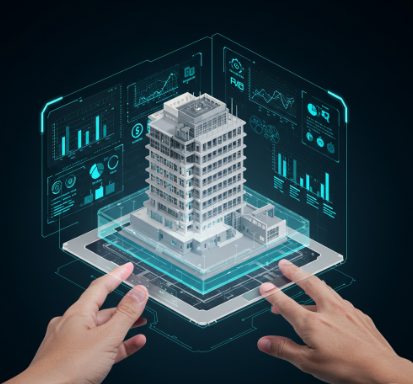Building Information Modeling (BIM) has revolutionized the architecture, engineering, and construction (AEC) industries by providing a digital representation of a building’s physical and functional characteristics. Now, the integration of Artificial Intelligence (AI) is taking BIM capabilities to unprecedented levels, unlocking new efficiencies and insights throughout the entire building lifecycle. AI algorithms are processing the vast amounts of data within BIM models to automate tasks, improve accuracy, and facilitate more informed decision-making.
One significant way AI enhances BIM is through intelligent clash detection and risk management. Traditionally, identifying clashes between different building systems (e.g., HVAC ducts intersecting with structural beams) is a manual and time-consuming process. AI algorithms can analyze BIM models to automatically identify potential clashes with greater speed and accuracy. Furthermore, AI can go beyond simple clash detection by predicting potential risks and suggesting design modifications to mitigate these issues early in the design phase, saving significant time and costs during construction.
Download PDF Brochure @ https://www.marketsandmarkets.com/pdfdownloadNew.asp?id=95037387

AI is also transforming design optimization within BIM workflows. By analyzing various design parameters and performance metrics, AI can suggest optimal design solutions that meet specific project requirements, such as energy efficiency, structural stability, and cost-effectiveness. Generative design, powered by AI, allows architects and engineers to explore a multitude of design options based on defined constraints, leading to innovative and efficient building designs that might not have been conceived through traditional methods.
The application of AI in BIM extends to construction management as well. AI algorithms can analyze BIM data alongside real-time site information, such as sensor data and progress reports, to optimize construction schedules, resource allocation, and supply chain management. Predictive analytics powered by AI can forecast potential delays or bottlenecks, allowing project managers to take proactive measures. Moreover, AI-powered robots and autonomous equipment can utilize BIM models for precise on-site tasks, improving efficiency and safety.
Post-construction, AI continues to enhance the value of BIM. AI-driven analytics can leverage the information embedded in BIM models to optimize building operations and maintenance. By analyzing energy consumption patterns, predicting equipment failures, and facilitating proactive maintenance scheduling, AI helps building owners and facility managers reduce operational costs and extend the lifespan of building assets. This intelligent management based on BIM data creates smarter and more sustainable buildings.
In conclusion, the integration of AI is significantly augmenting the capabilities of BIM across the entire building lifecycle. From intelligent design optimization and automated clash detection to enhanced construction management and smart facility operations, AI is empowering AEC professionals to work more efficiently, make more informed decisions, and ultimately create better-performing and more sustainable buildings. As AI technology continues to evolve, its role in enhancing BIM will only become more profound, shaping the future of the built environment.